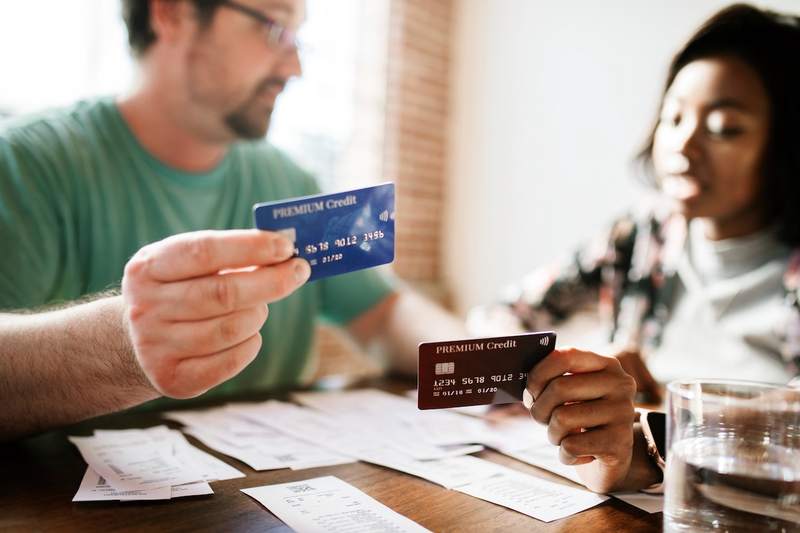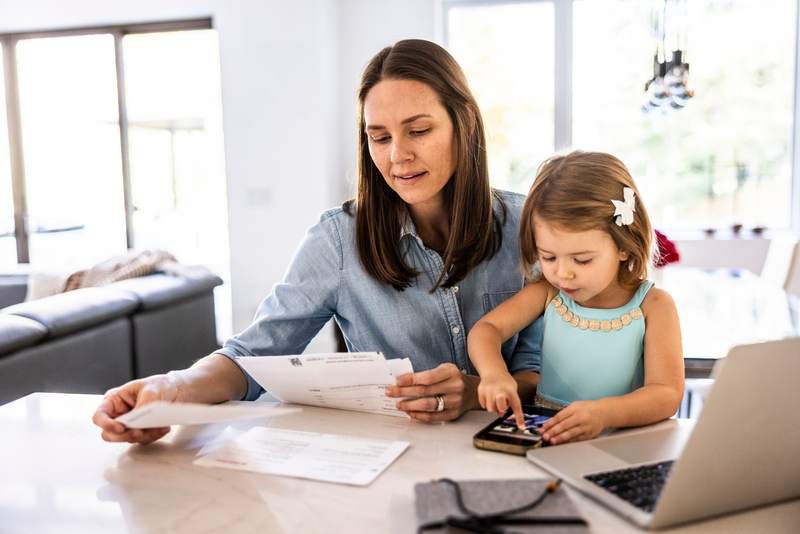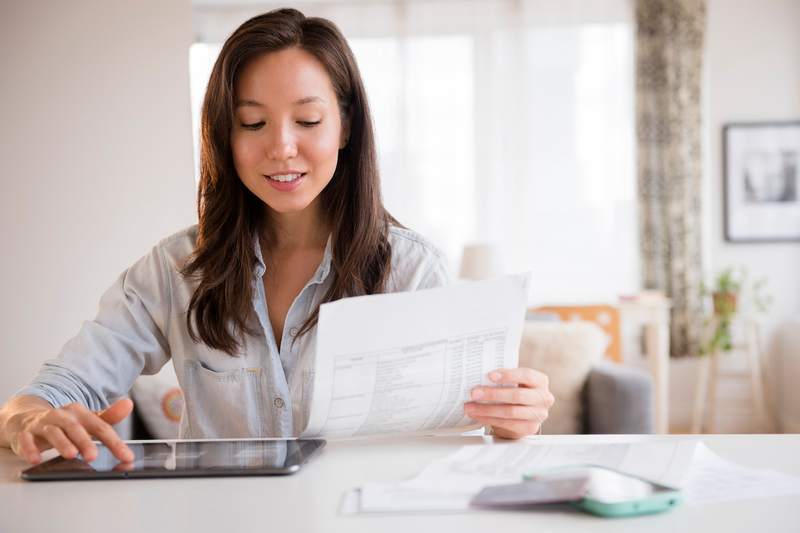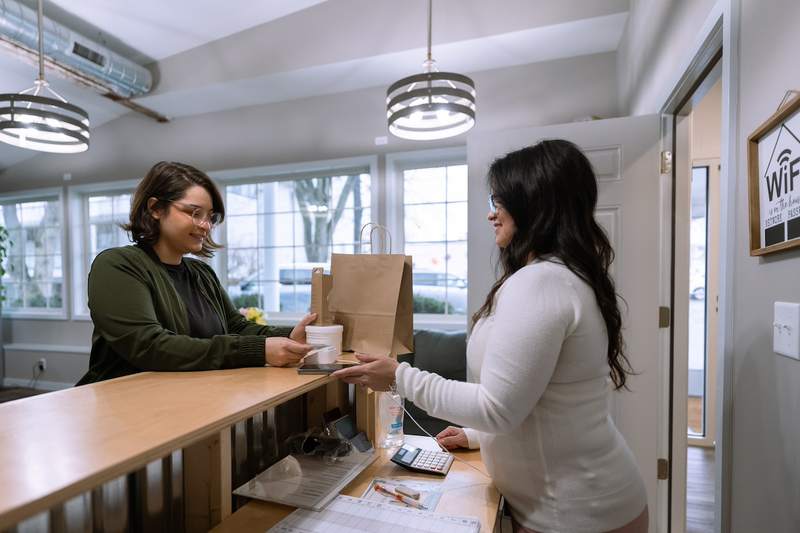Need cash to fix the transmission that suddenly conked out in your car? Need to replace your home’s leaking hot water heater or furnace that isn’t providing enough heat? You might consider a personal loan.
A personal loan is typically unsecured – meaning that you don’t have to put up collateral such as your home or car to back it up – and can provide you with quick cash to deal with life’s unexpected emergencies. You can apply for personal loans through banks, credit unions and online lenders. If you qualify, you’ll receive a lump sum of cash that you can spend on whatever you like. You then pay back your loan in regular monthly payments with interest.
But how do you qualify for a personal loan and what costs might you pay? Here’s a look at how personal loans work, where you can find them and what lenders will look at when analyzing your application.
Taking Out A Personal Loan: A Step-By-Step Guide
Those interested in taking out a personal loan can take these steps when applying for one.
1. Determine What You Can Afford
Before applying for a personal loan, you need to make sure that you can afford your new loan’s monthly payment.
If you haven’t already, create a household budget listing your monthly expenses and income. Include estimates for discretionary spending, such as dining out and entertainment, and expenses that vary each month, such as your electric bill and transportation costs.
Once you’ve done this, you can see how much room you have in your budget for a monthly personal loan payment. Don’t take out a loan that comes with a payment higher than what you can afford.
Factor in any fees that lenders charge. Some levy an origination fee that can run from 1% to 5% of the total amount that you borrow. If you take out a $20,000 loan, you could pay an origination fee of $200 to $1,000.
2. Check Your Credit Score And Report
You’ll qualify for the best interest rates and terms on a personal loan if you have a higher credit score. Before applying, order a free copy of your credit report from AnnualCreditReport.com.
You should also order your FICO® credit report. You might have to pay for this, but you can order it from any of the three national credit bureaus of Experian™, Equifax® or TransUnion®.
Most lenders consider a FICO® Score of 800 or higher to be an excellent one and 740 or higher to be very good. If you have a credit score that is significantly lower than that, building credit should be at the top of your to-do list before applying for a personal loan. Applying with a co-signer or co-borrower can also improve your odds of qualifying for a personal loan.
3. Choose The Type Of Personal Loan You Need
You can choose from several personal loan types. If you’re looking to consolidate high-interest credit card debt, you might choose a debt consolidation loan.
If you have poor credit you might apply with a co-signer to increase your odds of approval. If no one is willing to co-sign for you, you could apply for a secured personal loan instead, one in which you put up collateral, such as a security deposit, to lessen the risk that lenders are taking on when working with you.
4. Shop Around And Choose A Lender
Don’t just accept the first offer you receive from a lender. Instead, shop around with several lenders and compare their offers. This gives you the best chance to nab the lowest interest rates and better terms for your situation.
In addition to comparing the interest rates offered by different lenders, look at the fees they charge. Some lenders might charge an origination fee while others won’t. But if the lender that charges an origination fee is also quoting you a lower interest rate, that loan might still be the most affordable over time.
There are several ways you can get a personal loan.
- Peer-to-peer lenders: Peer-to-peer personal loans are funded by individual investors or companies. You can find these lenders online, with many of them offering personal loans. Peer-to-peer lenders charge a variety of fees, while others have limits on how much they are willing to lend. Do your research before choosing one of these companies.
- Banks and credit unions: Banks and credit unions usually offer low rates on personal loans. But you will have to meet their credit standards to qualify. This could be a good option if you already have accounts with a local bank or credit union.
- Online finance companies: Online lenders work with banks to expedite the process of originating personal loans. These online options often come with an easier application and approval process. They may also provide you with your funds faster.
5. Apply For The Loan
Once you’ve selected a lender, it’s time to apply for your loan. With many lenders, you can fill out an application online without ever having to talk to a loan officer. With banks or credit unions, you might have to meet with loan officers or at least speak to them on the phone.
When filling out your loan application, you’ll usually have to provide your full name and address and estimates for how much you earn each month and how much debt you are responsible for paying down each month.
Your lender will typically ask for you to provide certain documents that it can use to verify your income. These can include:
- Pay stubs: You’ll usually have to provide copies of your two most recent paystubs.
- W-2s: Most lenders request copies of your last 2 years of W-2 statements.
- 1099s: If you earn freelance income, you might need to provide copies of your 1099 statements from the last 2 years.
- Bank account statements: Lenders will usually ask for copies of your last 2 months of bank account statements.
- Driver’s license: You’ll need to provide proof of your identity. A copy of your driver’s license is the most common way to do this.
- Proof of residence: You’ll also need to prove that you live at the address that you provided on your application. You can usually do this by providing copies of bills that have your address on them, such as your utility, cable or cellphone bills.
6. Close On The Loan
Once your lender approves your loan, it will officially close it, meaning that you will receive your funds, usually in a single payment. You’ll sign any papers stating how much you are borrowing, the loan’s interest rate, your monthly payment and its repayment schedule. Depending on your lender, this can be done online.
7. Start Making Monthly Payments
Once you receive your funds, you’ll start paying back what you’ve borrowed in regular monthly payments, with interest. How much you pay each month depends on what you’ve borrowed, your interest rate and whether you rolled any origination or other fees into your loan amount. You can either mail your lender a check each month or you can pay online through a password-protected portal. You can also set up automatic payments so that you won’t forget to make a payment on time.
See What You Qualify For
Home Purchase
Home Refinance
Tap Into Equity
Types Of Personal Loans
There are several types of personal loans for which you can apply. These include:
- Fixed-rate loan: A fixed-rate personal loan comes with an interest rate that never changes during its term. This makes budgeting for your monthly payments easier. Because your interest rate doesn’t change, your monthly payment won’t, either.
- Variable-rate loan: Variable-rate loans are the opposite of fixed-rate versions. Their interest rates will change during your loan’s terms. These loans often start with initial interest rates that are lower than what you’d get with a standard fixed-rate loan. During your loan’s fixed period, this lower interest rate will remain in place. After the fixed period ends, your loan enters its variable period, during which its interest rate will change according to a set schedule. It will then rise or fall according to whatever economic index it is tied to.
- Secured loan: A secured loan is tied to some form of collateral that your lender can take if you stop making your payments. An auto loan is an example. If you stop making your payments, your lender can repossess your car. Your car, then, serves as collateral. Secured loans tend to come with lower interest rates because lenders are taking on less risk.
- Unsecured loan: An unsecured loan – which most personal loans are – comes with no collateral. If you stop making payments on an unsecured personal loan, your lender can’t take your house, car or any other form of collateral. Because lenders are taking on more risk, they usually charge higher interest rates on unsecured personal loans. And if you default on payments, there will likely still financial or legal be repercussions.
- Debt consolidation loan: With a debt consolidation loan, you take out a new loan and use the money you receive to move your various debts into one debt (your new loan) with one interest rate and payment. The goal is to replace several debts with a lower interest than the average rate attached to your other debt. You might take out a personal loan with an interest rate of 8% to pay off credit card debt that comes with an average interest rate of 19%.
The Bottom Line
A personal loan can help you cover unexpected emergencies or consolidate high-interest-rate debts into one loan with a lower rate. Remember, though, that applying for a personal loan can take time, and that it’s important to do your research before choosing a lender. If you’re ready to begin the process, you can apply for a personal loan.

Dan Rafter
Dan Rafter has been writing about personal finance for more than 15 years. He's written for publications such as The Washington Post, Chicago Tribune and Wise Bread.












